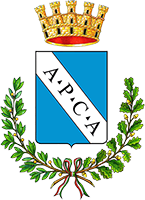
The village of Porchiano del Monte is 9 km from Amelia, perched on a scenic hilltop surrounded by gentle slopes, at an altitude of 463 metres above sea level, dominating the Tiber Valley. This is the ancient “Fortiano” referred to in Medieval archives as being a Castrum or fort. Between the 13th and 14th centuries, it was intensely fought over by the towns of Amelia, Todi and Alviano. In 1317 passed under Amelia’s jurisdiction which led to vicious reataliation on the part of the nearby Castle of Lugnano and Orvieto, as they were both strongly opposed to Amelia’s expansionist strategies. In 1495 the famous Bartolomeo d’Alviano (Todi 1455 – Ghedi/Brescia 1515), captain of fortune, General of the Venice’s Republic Army, Duke of Pordenone and Lord of Alviano and Attigliano, occupied Porchiano and forced it under his own control. He was responsible for major operations to fortify the walls, but the castle was once again occupied by Amelia the following year, and this war culminated in its total destruction, along with all the land round about, at the hands of Alviano’s soldiers, causing huge damages. In 1498, Ferrante Farnese, a condottiero allied of Bartolomeo d’Alviano, attacked the dominions of Chiaravalle family dislocated on the territory close to Acquasparta and Amelia, occupying once again Porchiano before to reach Bibbiena (Arezzo) where joined the mercenary troops of Alviano.
Subsequently Porchiano del Monte became a Common. It remained independent until the Municipality was suppressed in 1830, passing then under Amelia’s jurisdiction. The village presents some delightful foreshortening: a magnificent castle gate, surmounted by the emblem of St. Bernardino of Siena who preched in the district of Amelia in 1426; parts of the village’s old Medieval walls and square or rounded turrets are still in very good repair; very near to this gate there is also the Romanesque church dedicated to St. Christina, with a fresco painted in the apse representing the Virgin and he Child in Glory with the Saints Christina, Bernardino of Siena and St. Thomas Aquinas (16th century). Here was traslated in 1574 one of the five stones proceeding from the main altar in the church of St. Christina in Bolsena, with traces of Holy Blood that appeared during the Eucharistic Miracle witnessed by the priest Peter of Prague in 1263. Probably in this occasion, in 1574, was celebrated the translation of the relic commissioning the artwork. Some excursions are possible in Porchiano and its vicinity: just outside the village lies, in a very picturesque location, the lovely “Mattia Park”, a peaceful place to relax beneath holm-oaks with sports facilities and a picnic area as well. About a kilometer from the town centre is another Romanesque chuch with an adjoining bell tower dedicated to the Holy Trinity: it has interesting frescoes date back from 11th to 15th centuries. Finally, from the road that link Porchiano del Monte to Attigliano, you can join the path called Palliccio: it was classified some years ago as a naturalistic oasis and incluede by the management of WWF Italy in the “Italy to save” list. Church of Saint Simeon The parish church is located in the town centre and dedicated to St. Simeon, successor of the apostle St. James the Just as Bishop of Jerusalem. There are no known historical details on its foundation, but some quotes in the Rationes Decimarum (the log of taxes payed by the various religious institutes to the Roman church) for the years 1275 to 1279, suggest that the building was erected in the Romanesque period (between 11th and 13th century).
The exterior is very simple, in contrast with the richness of interior decoration. The church stands out alone with its Romanesque bell tower soaring upwards by its side. Inside is divided into 3 nave by solid columns topped with majestic capitals; some of these are decorated with devotional frescoes, including a St. Anthony Abbot (16th century) and Our Lady of Constantinople by St Michael and St Mary Magdalene (first half of the 17th century) while the apse preserves a wall painting with Saints Simeon, Christina, Blessed Lucia and John Bufalari by the painter and restorer Luigi Branzani from Todi (1935). A chapel on the right side of the church contains a table depicting the Assumption of the Virgin related to Umbrian-Latial School and dated about the end of the 15th century, previously attributed to the Master of the Triptych of Chia and more recently assigned to the painter Cola da Orte, collaborator of the famous Piermatteo of Amelia (Amelia 1445/48 – ca. 1506). Within a tabernacle at the end of the righ nave, there is one of five stones which were washed by the blood of the Eucharistic Miracle of Bolsena in 1263 (formerly in the church of Santa Cristina located just outside the city walls). The most important work in the church, however, is on the counter façade: it is a fresco, unfortunately arrived to present in bad repair, which in 1987 was attributed to Piermatteo of Amelia by Marcello Castrichini and then confirmed by Vittorio Sgarbi. The composition, which is part of an architecture, represents the Virgin and Child in Glory with Angels, St. Stephen to their left and to the right a woman who is identified as St. Christina showing the tie broken between the fingers of his right hand, detail iconographic almost certainly alluding to the martyrdom of the saint, who, before she was killed, pierced with arrows in the chest and hips, it was made binding and whipped by his father Urbano, a Roman nobleman who do not forgive Christina for her conversion to Christianity. The date of execution, specifically in the right pillar, has been considered, to date, 1486, but the storage conditions do not allow the decoding of certain. There remain, legible, the four Roman numerals end, XXVI, while the two which precede the first is perhaps a C while the second, unfortunately affected by a fall color, a probable L. In that case the correct date would be 1476 and not 1486. The archival sources also document that Don Mario Clementini, a member of an Amelia’s noble family, was dean of Porchiano from 1436 to 1477, which confirms the dating 1476.
The Madonna and Child of Porchiano is a lucky model that Piermatteo revisited several times in his work, featuring a pictorial ductus sweet and refined, the most successful example of which is undoubtedly the main panel of the dismembered Polyptych of St. Augustine (1478-1481), formerly in Orvieto and now conserved in Berlin (Staatliche Museen). The work of Porchiano is therefore to be considered one of the first important commissions entrusted to Piermatteo to return home after the apprenticeship had in Florence in one of the most respective workshop in the Renaissance Age, that of Andrea del Verrocchio (Florence 1435 – Venice 1488). The first commissions was probably the Saint Anthony Abbot (about 1474-75) originally in the church of St. John the Baptist and now in the Municipal Gallery, the second could be at this point the fresco in the church of St. Simeon (about 1476), and the third the extraordinary Annunciation, performed for the monastery of Santissima Annunziata, which by the end of the 19th century is one of the major attractions of the Isabella Stewart Gardner Museum in Boston (was bought by the American collector in 1880), whose patronage can be traced back around 1477.


